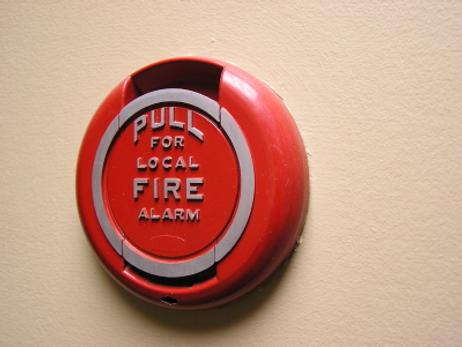In the wake of nearly 10 years of increased school violence, all public schools are legally required to possess specific lockdown and emergency response procedures. Specifically, middle schools and high schools, which experience greater safety breaches due to their age groups, should frequently practice their emergency response protocols to ensure that all students and staff are ready to respond in the rare case of a serious emergency or threat. An awareness of the public school’s emergency protocols can help protect all community members—especially the students.
This video outlines how to set up a protocol for handling a crisis situation.
Types of Emergency Response
Public schools have different “threat levels” that result in specific emergency responses. For example, Montgomery Public Schools in Rockville, Maryland employ two specific threat level procedures. The first type of threat is labeled as “code blue.” A “code blue” threat signifies that there is an emergency or serious crisis near the school. In the case of a “code blue,” all Montgomery administrators announce appropriate information to the whole school, resulting in immediate teacher response.
Teachers in a “code blue” situation are to ensure that no students in the building are unsupervised. Classroom instruction continues, however, students are not permitted to leave the building unsupervised. While a “code blue” can potentially turn into a serious situation, this type of threat is generally not a direct safety or security concern.
Montgomery, like many public schools, also has a more serious emergency response, in addition to their less-serious “code blue” directives. A “code red” is the term used to describe Montgomery’s response in the case of an imminent and serious danger within the school.
The “code red” alerts all students and school members that there is a serious danger and threat to all individuals in the building. In the case of a “code red” situation, all students are required to quickly find a secure classroom, at which point all classrooms are locked. Students and staff are to remain in locked classrooms away from any doors or windows, and they should stay in this manner until instructed that the school is safe.
This video from the National Association of School Nurses outlines its views on preparing for an emergency situation.
What Parents Need to Know
While high schools and middle schools tend to be more susceptible to incidents of student violence or security breaches, elementary schools also have their own emergency and threat responses. As the Crossville Chronicle explains, one local elementary school was forced to react with emergency measures as the school received news that a potentially serious criminal was heading to the school to pick up her child. Per the code of the school’s emergency response, the leading administrators immediately put the school under total lockdown. As in middle and elementary schools, a lockdown means that no one is allowed in or out of the building unless they have specific approval from the police and/or school leaders.
As evident in the case of this elementary lockdown, all parents need to be aware of their child’s school’s emergency response procedures. Whether a child is in elementary, middle, or high school, all parents need to know what to do and how to respond if their child’s school is forced into an emergency response situation.
When a school responds with emergency measures, its sole priority is to keep all students and faculty safe. This often means that even parents are not allowed into the school building. Oftentimes, in cases of potentially serious school safety threats, students and staff remain in the building under lockdown, even after the school day has ended. While these measures are often frustrating for parents who want to remove their children from the school during a threat, all parents need to appreciate that the school has to protect itself from all potential incoming individuals—even if the incoming individuals are parents.
Most schools create their emergency response plans with the assistance of local law enforcement officers alongside school leaders. Additionally, many public schools are required to adhere to state or county mandated response actions. As one school security leader further explains in the Crossville Chronicle, all school emergency response procedures should be created with a model known as “PREPARE,” which represents and stands for “providing, reaching, educators, parents/students and restoring community with effective interventions.”
The public school’s goal, ultimately, is to keep all students, faculty, and parents in the same circle of information. The emergency plans must be clearly communicated and understood in order to respond to any dangerous situations with quick and efficient safety measures.
This video from School Safe explains how to handle a lockdown situation.
Additional Emergency Measures
While all public schools have emergency response protocol regulations, many public schools are striving to do more to prevent acts of danger and violence, rather than simply responding to them.
Specifically, some schools have installed security video cameras, and/or are utilizing metal detectors for all individuals entering the school. Additionally, many school communities now provide students with a threat or concern hotline. Using a hotline number, students or community members can anonymously report any threats or safety concerns. With this approach, safety officials then respond to all messages with an investigation and added watch.
To find out if your son or daughter’s school utilizes preventative measures, check your child’s school’s website, or contact your child’s school teacher or principal.
Questions? Contact us on Facebook. @publicschoolreview












